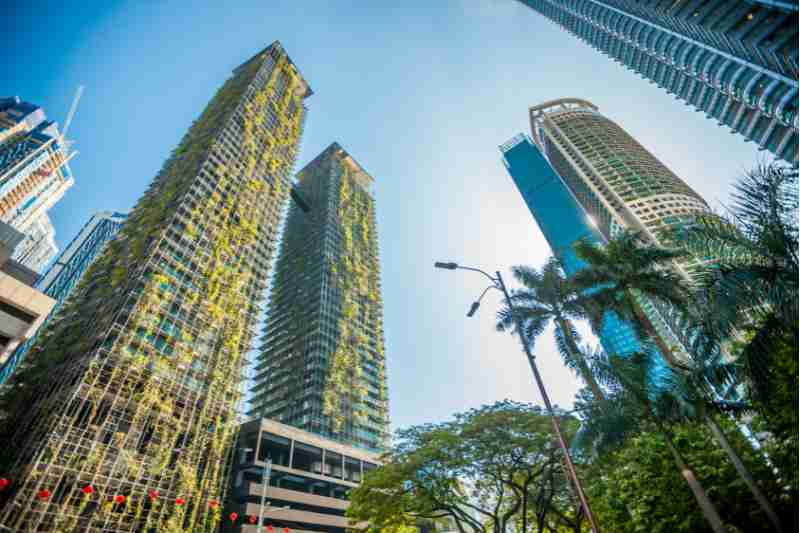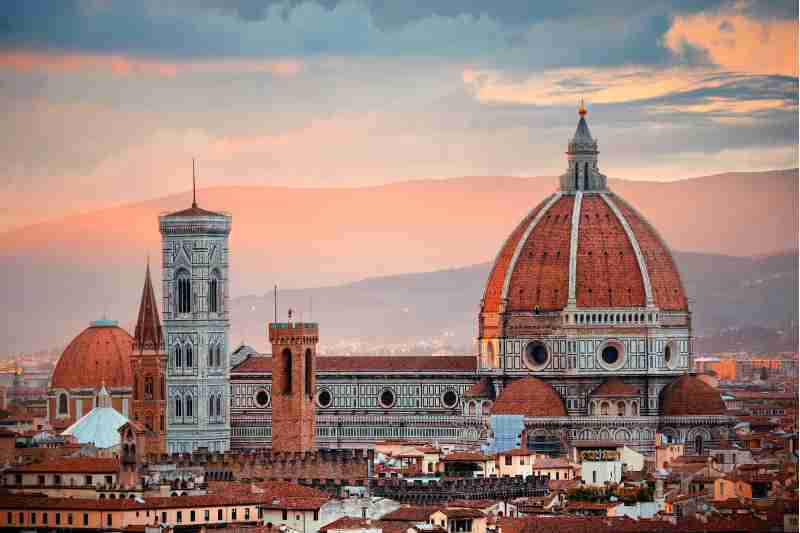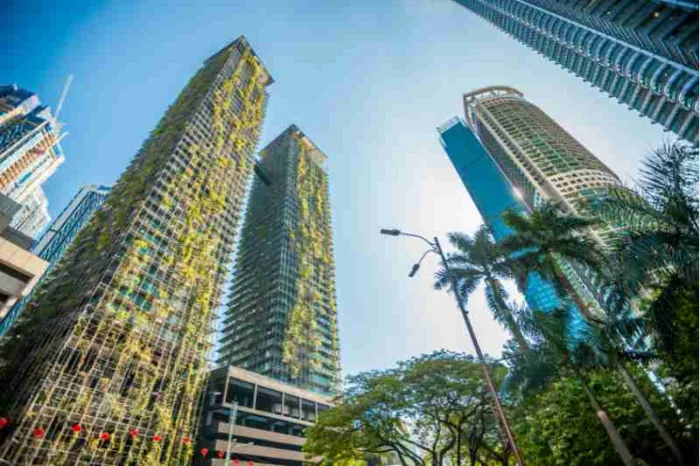
It’s no shock that advances in architecture and design might net you substantial savings in the areas of building construction, sustainability, and maintenance. But the source of those innovations might be a surprise: Today’s most intrepid architects and designers are looking to nature as part of a movement called biomimetic architecture.
In this post, we explain what biomimetic architecture is and give you some examples. Then, we go over some of the ways that you might find biomimicry useful on your own property.
This post covers:
- What is biomimetic architecture?
- What are some examples of biomimetic architecture?
- Which plants and animals can you take inspiration from?
What is biomimetic architecture?
Biomimetic architecture is a design movement that calls for buildings to take their design cues from plants, animals, and other things found in nature.
Materials and innovations inspired by nature already surround us. Biomimetic architecture is just one part of the larger biomimicry movement, which is inspiring innovators in fields from construction to fashion. You may be surprised to learn that you’re already used to biomimicry. In fact, one of its most famous examples is Velcro.
The inventor of Velcro noticed that, when he was out with his dog, certain types of seeds would attach themselves to his clothes (and his dog). But after using a microscope, the inventor saw the cause: thousands of tiny hooks on the seeds. It was a brand-new way to fasten things together, and the rest is history.
Velcro is just one example of biomimicry that’s changed the world. By taking a look at the efficient ways that plants and animals move and use energy, biomimetic architects and designers can see if there are more efficient ways for buildings to be constructed and use energy.
Learn about sustainable buildings with ButterflyMX:
What are some examples of biomimetic architecture?
Architecture inspired by nature is producing some of the most innovative buildings being constructed today. So, let’s take a look at a few and see how nature has inspired them.
Biomimetic architecture projects include:

1. The Cathedral of Florence
Throughout history, architects and engineers have been using biomimicry. Famously, the Renaissance architect Filippo Brunelleschi studied eggshells to learn how to build dome-shaped structures with thin, light materials — and the result was the world-famous Duomo atop the Cathedral of Florence.
2. Eastgate Centre, Zimbabwe
The Eastgate Centre is a mixed-use office and mall space in Zimbabwe. Instead of depending entirely on an air-conditioning system that would be wildly inefficient during summers, the creator of Eastgate Centre looked to the self-cooling natural architecture of termite mounds.
As in a termite mound, hot air in Eastgate escapes from a central chimney. As this air is displaced, cool air rushes in to replace it — an innovation that nets Eastgate a 35% reduction in cooling costs compared to nearby buildings.
Eastgate has been inspiring architects for generations. One famous biomimetic building using the Eastgate Centre’s ideas is the Portcullis House in London, right across from Big Ben.
3. Hy-Fi PS1 installation, New York City
The architects of the future are always looking for more energy-efficient and climate-friendly building materials. In fact, you might be surprised to learn that the construction materials of tomorrow are advancing past concrete and steel.
In 2014, the Museum of Modern Art’s Young Architects Program selected the Hy-Fi tower as its winner — on the back of an innovative new concept. The builders of Hy-Fi would grow the bricks they used for it out of mushrooms.
Each brick took a mere five days to grow. And, Hy-Fi engineers became skilled enough to control the strength and flexibility of each brick. Who knows? In the future, the bricks you use to construct buildings might be organically grown.
Which plants & animals can you take inspiration from?
Not every biomimetic architectural example is as dramatic or experimental as a mushroom-based brick. Whether you’re in the early stages of planning the architecture for a multifamily or commercial building, or you’re managing an existing one, there are plenty of things you can do to reap the benefits of biomimicry.
You might be able to take inspiration from:

Trees
Photosynthesis is the natural process that plants use to create energy for themselves. Your building can power itself along those same lines if you install solar panels that convert sunlight into usable electricity. By installing solar power, you’ll reduce your dependence on your local power grid and pay less for utilities.
Soon, solar cells and plants might become even more similar. MIT is currently studying ways to use real plant proteins to create solar panels — allowing solar power to become even more efficient.
Beavers
Biologists and conservationists have given beavers an affectionate nickname: “nature’s engineers”. Wherever beavers go, the dams they build have positive effects on an area’s biodiversity and water quality.
While you may not have a beaver’s dam-building instincts, you can pay special attention to your building’s water quality and efficiency by installing a series of smart pipes around your property. You can depend on these sensors to give you real-time updates, and they can even shut off your water system automatically if they detect a catastrophic leak.
Termites
Anybody who’s had to deal with a termite infestation might scoff at the idea of taking inspiration from them. But if you want to save money on air conditioning bills during hot summers, you might be able to take advantage of the same principle that termites use to keep their mounds habitable: passive cooling.
Passive cooling occurs when a building depends on energy-efficient cooling methods, like efficient construction or airflow, to cool itself instead of an air conditioning system. You might install glazing, insulation, or take another look at your building’s floor plans to achieve passive cooling.

Elephants
Elephants are highly social. When two herds of elephants meet, it’s common for the younger elephants to go off and play while the adults talk to each other — a sight that might be familiar from your own family reunions.
Across the planet, animals like elephants live in herds and use social networks to help each other out or simply relax. People have these needs, too. So what can your property do to help foster a social atmosphere? Or in other words, how can you shape your entire neighborhood into a desirable, social place that serves as an amenity in and of itself?
The answer: Zone off part of your property to create a third space, a kind of meeting place that serves as the heart of a neighborhood and creates a sense of community.
Takeaways
- Biomimetic architecture is a design movement that takes inspiration from plants and animals in the natural world.
- By taking inspiration from nature, architects are finding new ways to reduce the costs of building maintenance and construction.
- Biomimetic architecture buildings include the Cathedral of Florence, Zimbabwe’s Eastgate Centre, and the MoMA PS1’s Hy-Fi tower.
- From solar panels to smart sensors to passive cooling, there are many ways that you can take advantage of biomimetic architecture in your own developments.






